I’ll be traveling to Cambodia and Laos at the end of this month. To get ready, I’ve held my own private film festival; call it cineprepping.
There aren’t very many movies about Laos. Fittingly, the only one I could find is called The Most Secret Place on Earth. There are, however, enough films about Cambodia to give me a sense of how that country is viewed in the Anglo-American pop cultural imagination. And now there are some native Cambodian entries in the genre which, naturally, have different foci.
The Cambodia movies focus primarily on the nightmarish reign of the Khmer Rouge between 1975 and 1979; secondly on the role of the American government in paving the way for the Khmer Rouge’s rise to power; and thirdly on the failure of America and the European powers to provide humanitarian aid once Vietnam finally drove the Khmer Rouge from power. In short, it’s grim viewing and I’m going to need a vat of Zoloft and some Marx Brothers comedies to recover my usual good humor. “The feel-good movie of the year” has yet to be made about Cambodia.
All three of these aspects of recent Cambodian history are presented in Year Zero: The Silent Death of Cambodia, which was made by Anglo-Australian journalist John Pilger in 1978. Pilger makes no secret of where the responsibility for the deaths of between 1 and 2 million Cambodians lies. In describing his movie, he writes:
Year Zero not only revealed the horror of the Pol Pot years, it showed how Richard Nixon’s and Henry Kissinger’s ‘secret’ bombing of that country had provided a critical catalyst for the rise of the Khmer Rouge. It also exposed how the West, led by the United States and Britain, was imposing an embargo, like a medieval siege, on the most stricken country on earth. This was a reaction to the fact that Cambodia’s liberator was Vietnam – a country that had come from the wrong side of the Cold War and that had recently defeated the US. Cambodia’s suffering was a willful revenge. Britain and the US even backed Pol Pot’s demand that his man continue to occupy Cambodia’s seat at the UN, while Margaret Thatcher stopped children’s milk going to the survivors of his nightmare regime.
Pilger’s documentary was never shown in the US, but after it aired in the UK, viewers there sent over ₤45 million in aid to Cambodian relief efforts. The film was later cited by the British Film Institute as one of the ten most influential documentary films of the twentieth century.
Swimming to Cambodia (1987) is a Jonathan Demme film of a Spalding Gray monologue performance.
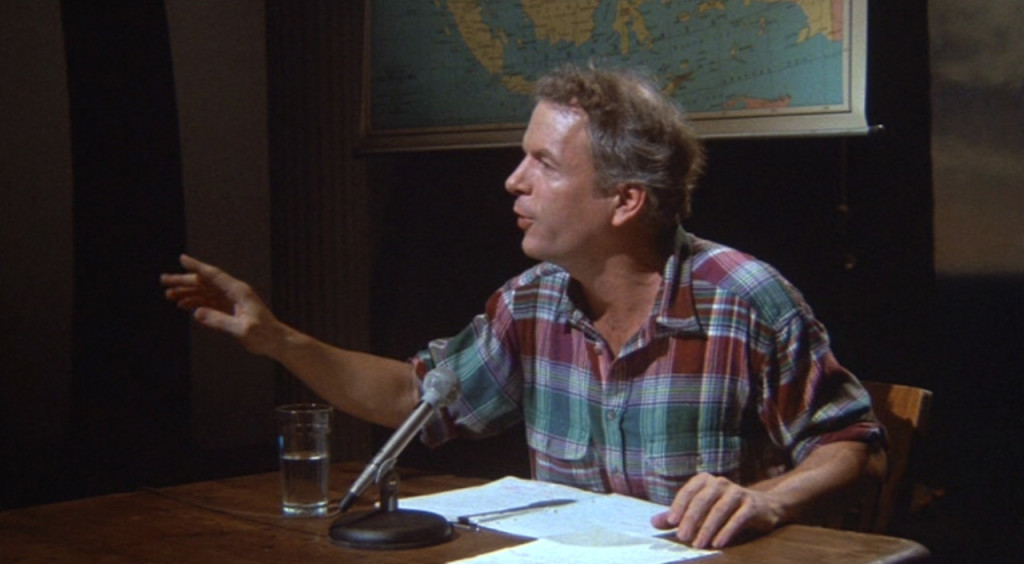
It’s quirky and amusing on the surface, as Gray recounts his experience playing a small role in another Cambodia movie, The Killing Fields. But beneath Gray’s charming bemusement runs a real current of anger. He says:
This [American] bombing [of Cambodia] went on for five years. The Supreme Court never passed any judgment on it and the military speaks with pride today that five years of the bombing of Cambodia killed 16,000 of the so-called enemy. That’s 25% killed, and there’s a military ruling that says you cannot kill more than 10% of the enemy without causing irreversible psychological damage. So, five years of bombing, a diet of bark, bugs, lizards and leaves up in the Cambodian jungles, an education in Paris environs in a strict Maoist doctrine with a touch of Rousseau, and other things that we will probably never know about in our lifetime — including, perhaps, an invisible cloud of evil that circles the Earth and lands at random in places like Iran, Beirut, Germany, Cambodia, America — set the Khmer Rouge out to carry out the worst auto-homeo genocide in modern history.
No wonder, perhaps, that Gray committed suicide in 2004.
The movie that Gray played small role in, The Killing Fields (1984), is probably the most well-known of the Cambodian atrocity genre, but it hasn’t aged well. Perhaps we’re all inured to genocide and killing on an industrial scale by now.
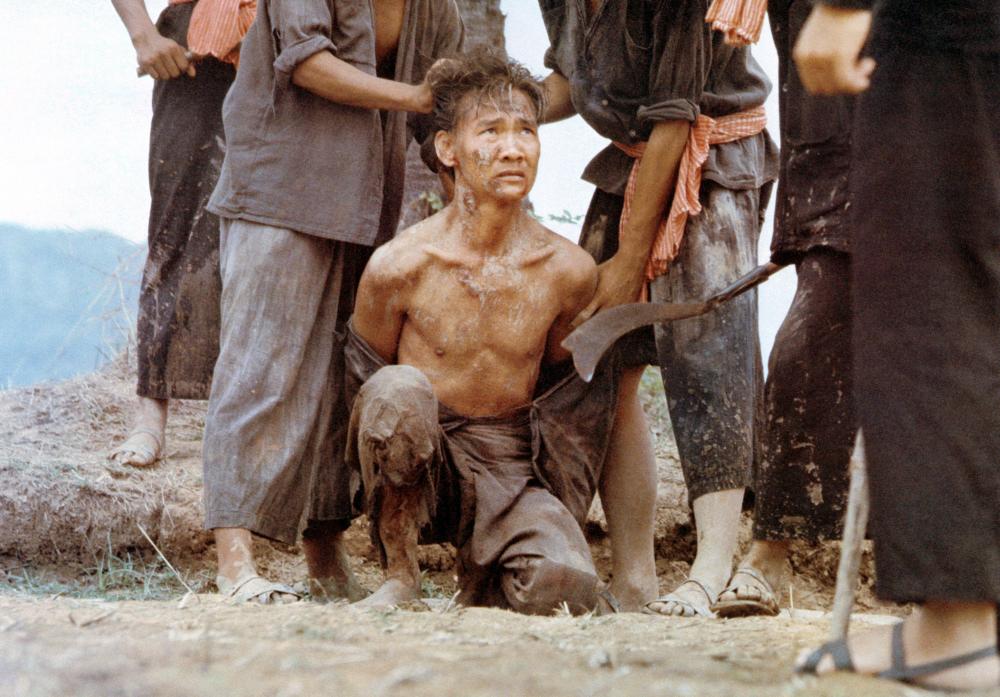
But I think there’s more to it. The movie tries to use an interracial buddy story about American journalist Sydney Schanberg and Cambodian photographer Dith Pran as a framing device for the tale of how Dith Pran survived in and escaped from a Khmer Rouge concentration camp. Perhaps the Schanberg part of the story was put in to sell the movie at the box office; a film with an unknown Asian hero and no American good guy would’ve been a tough sell in 1984 (and still would be today). But the two stories don’t mesh well and the lack of chemistry between the Schanberg character (played by Sam Waterston) and Dith Pran (played by Haing S. Ngor) is painful.
The most well-known Cambodia movies has to be Apocalypse Now (1979). It’s usually thought of as a Vietnam movie, but Cambodia is the protagonist’s destination, the location of the very heart of darkness. Click to play my favorite lines:
The story revolves around Colonel Kurtz, a highly decorated but unorthodox American soldier who, after years of combat in Vietnam, goes both AWOL and crazy and sets himself up as the ruler of a tribe of murderous fanatics in the Cambodian jungle, where they live as if they were back in the stone age.
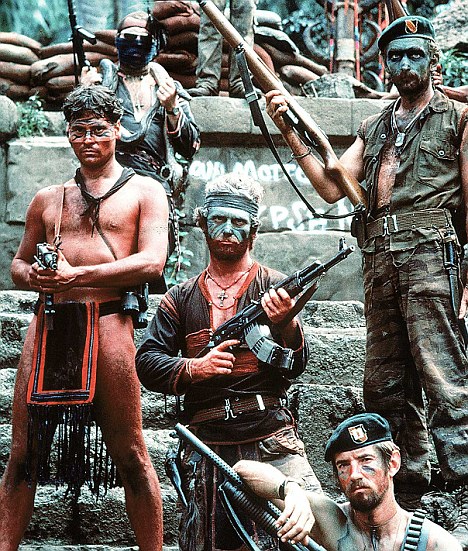
After watching all the other movies in the Cambodian genre, it’s hard not to see Kurtz as a stand-in for the Khmer Rouge itself.
There are five common themes running through these four films which I think sum up how Westerners view Cambodia today.
(1) Cambodia is a secret, mysterious, and bizarre place. (2) Its people are unfathomably brutal. (3) Westerners aren’t supposed to be there. (4) Westerners bring war with them when they arrive and (5) leave destruction and starvation behind when they leave.
Western filmmakers seem to have lost interest in Cambodia in the 21st century and have moved on to other atrocity stories. One Cambodian filmmaker, however, has started to explore his country’s recent history and social psychology.
L’Image Manquante (2013) (English title: The Missing Picture) reflects on the fact that there are few existing photos of life in the Khmer Rouge labor camps. A visual history of the most traumatic event in the country’s history is absent. There are, of course, officially produced pictures, such as films of Pol Pot addressing a gathering of nervous Khmer Rouge officials or visiting an artificially enthusiastic group of Cambodian people. These clips, which are included in the film, are at least a start in the process of trying to explain how and why the Khmer Rouge exterminated between a quarter and a third of their fellow Cambodians.
To compensate for the missing pictures of life under the Khmer Rouge, filmmaker Rithy Panh illustrates his personal narrative with oddly empathic clay figurines, which are sculpted and painted in great detail and set into elaborate dioramas.
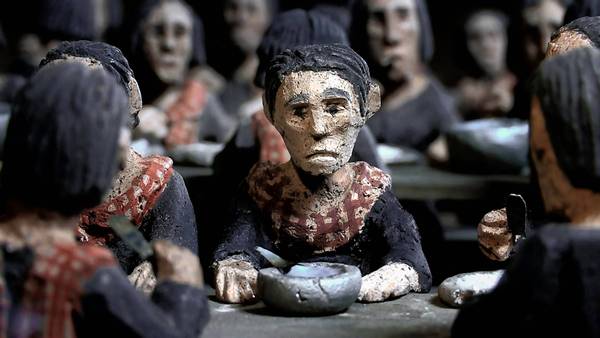
The effect simultaneously distances the view from the literal horrors of the atrocities of the time while forcefully driving home their emotional effects. The process of carefully creating these figurines seems to give the filmmakers and the viewers some way to comprehend and make peace with the past.
The other native Cambodian film, S-21: La Machine de Mort de Khmère Rouge (2003), is also directed by Rithy Panh. It uses a technique I first saw used in The Act of Killing (2012), a documentary about the Indonesian death squads of the 1960s. In both movies, the filmmaker coaxes the murderers, torturers, thugs, and jailers of years ago to re-enact their actions for the camera. Surprisingly, the war criminals seem very eager to perform.
In this documentary, Rithy Panh brings two survivors of the notorious Tuol Sleng prison — a former high school that was used as a detention and torture facility by the Khmer Rouge — back to the premises, which is now a genocide museum.
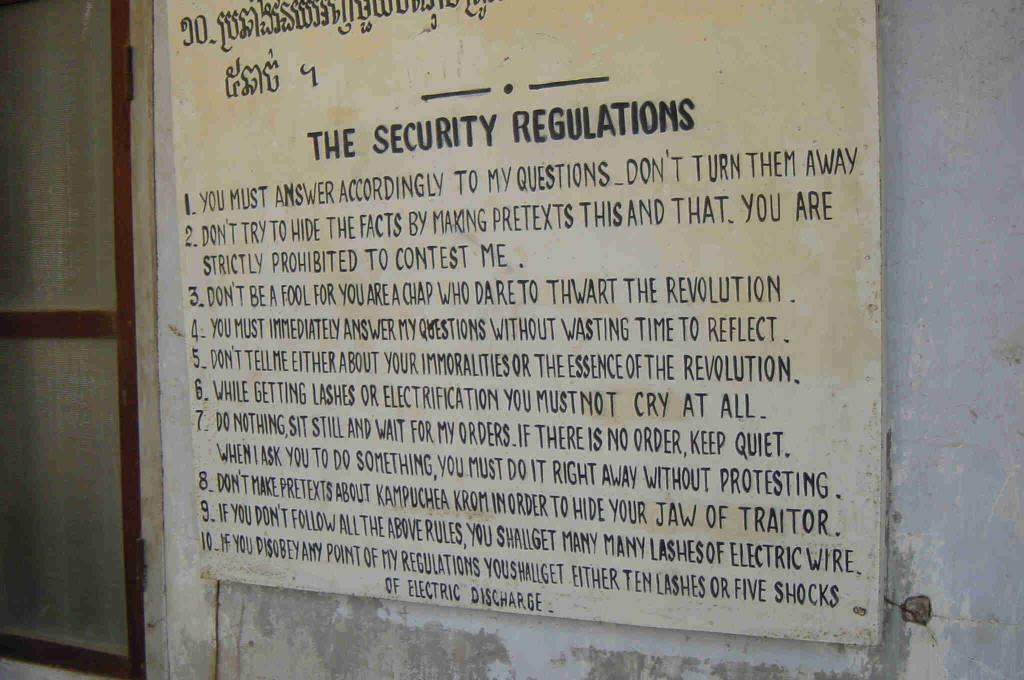
There they confront some of their guards and torturers. It’s a good set-up, but viewers who are seeking explanation, catharsis, understanding, or remorse will come away disappointed. The former Khmer Rouge jailers appear to have walled themselves off, psychologically and morally, from the atrocities committed by their younger selves, and Rithy Panh cannot penetrate their defenses. I was left with little doubt that if a 21st century version of the Khmer Rouge ever came to power, they would find plenty of willing partners among some of the people I saw in this film.
(By the way, I’d love to get my eyes on Don’t Think I’ve Forgotten: Cambodia’s Lost Rock and Roll (2012), which sounds a little more upbeat than all the movies with Death, Killing and Apocalypse in their titles, but I can’t find a copy to download. Would any of my readers care to shoot me a copy?)


































Jim, this is an excellent post on Cambodian films. Your blogposts never cease to captivate me. I may have to rent one or two of your aforementioned films which I have not already seen. Based on my preference for happy endings, that would be ALL of them with the exception of “Apocalypse Now.” When AN was first released in theaters, I was able to watch it in its entirety, but was shell-shocked by its unrelenting intensity. I cannot imagine viewing that AND “The Killing Fields” back-to-back. I have taken note of your recommendations for post-viewing pyschic repair. As a former Girl Scout, I like to be prepared, so I appreciate the head’s up. However, I prefer my Marx Brothers with scotch, hold the Zoloft. (Former Girl Scout Gone Wild!) By the way, the music documentary you seek, “Don’t Think I’ve Forgotten: Cambodia’s Lost Rock and Roll,” has not been released on DVD. From what I’ve read online, it is being shown at film festivals. There is a Youtube video of its January 11th world premiere which you may have already seen. If not, here’s the link: https://www.youtube.com/watch?v=djHiH69KgJA Enjoy your Cambodia/Laos adventure. I look forward to your next chapter. –one of your Peeps.
Yikes! “Cambodian films” should read “films on Cambodia and Laos.”